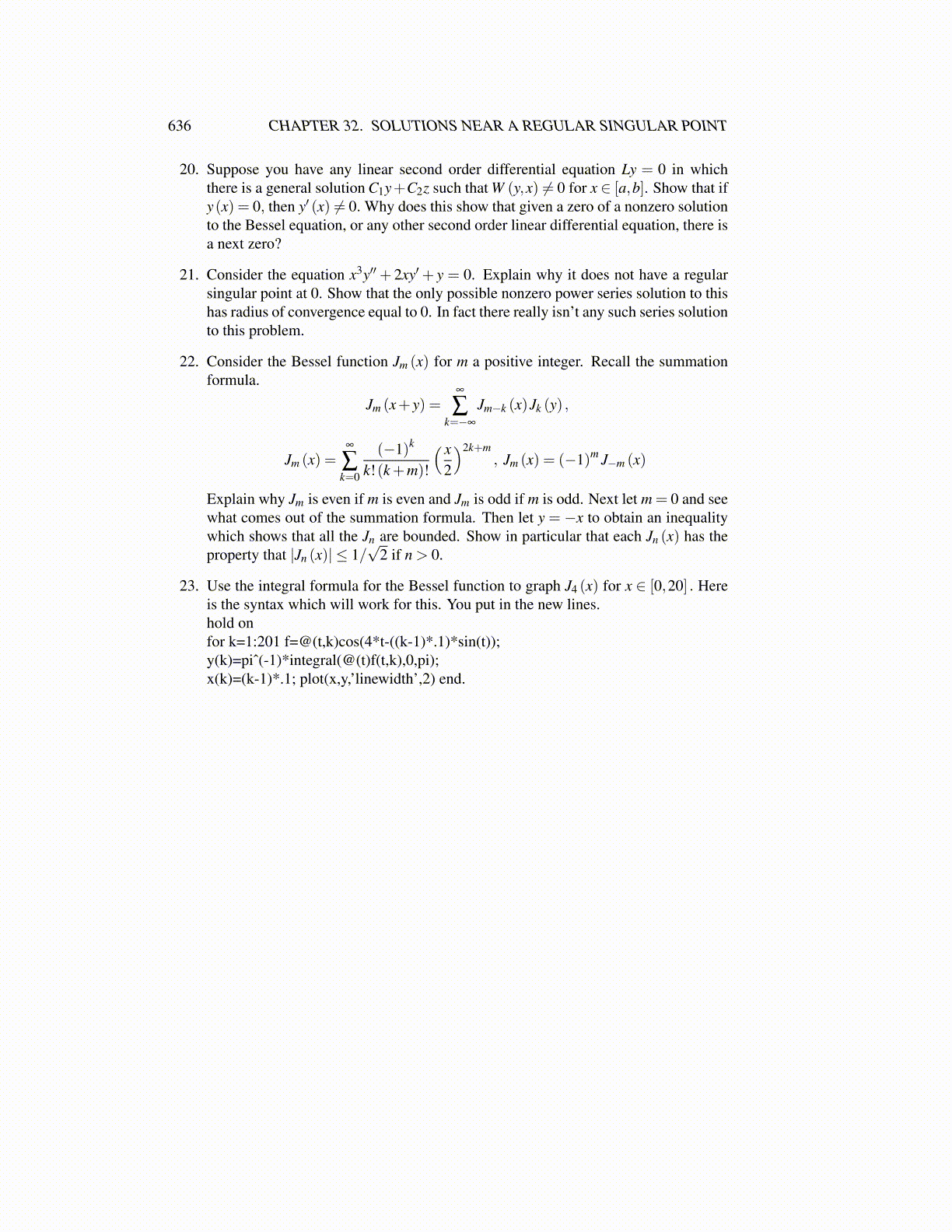
636 CHAPTER 32. SOLUTIONS NEAR A REGULAR SINGULAR POINT
20. Suppose you have any linear second order differential equation Ly = 0 in whichthere is a general solution C1y+C2z such that W (y,x) ̸= 0 for x ∈ [a,b]. Show that ify(x) = 0, then y′ (x) ̸= 0. Why does this show that given a zero of a nonzero solutionto the Bessel equation, or any other second order linear differential equation, there isa next zero?
21. Consider the equation x3y′′+ 2xy′+ y = 0. Explain why it does not have a regularsingular point at 0. Show that the only possible nonzero power series solution to thishas radius of convergence equal to 0. In fact there really isn’t any such series solutionto this problem.
22. Consider the Bessel function Jm (x) for m a positive integer. Recall the summationformula.
Jm (x+ y) =∞
∑k=−∞
Jm−k (x)Jk (y) ,
Jm (x) =∞
∑k=0
(−1)k
k!(k+m)!
( x2
)2k+m, Jm (x) = (−1)m J−m (x)
Explain why Jm is even if m is even and Jm is odd if m is odd. Next let m = 0 and seewhat comes out of the summation formula. Then let y = −x to obtain an inequalitywhich shows that all the Jn are bounded. Show in particular that each Jn (x) has theproperty that |Jn (x)| ≤ 1/
√2 if n > 0.
23. Use the integral formula for the Bessel function to graph J4 (x) for x ∈ [0,20] . Hereis the syntax which will work for this. You put in the new lines.hold onfor k=1:201 f=@(t,k)cos(4*t-((k-1)*.1)*sin(t));y(k)=piˆ(-1)*integral(@(t)f(t,k),0,pi);x(k)=(k-1)*.1; plot(x,y,’linewidth’,2) end.